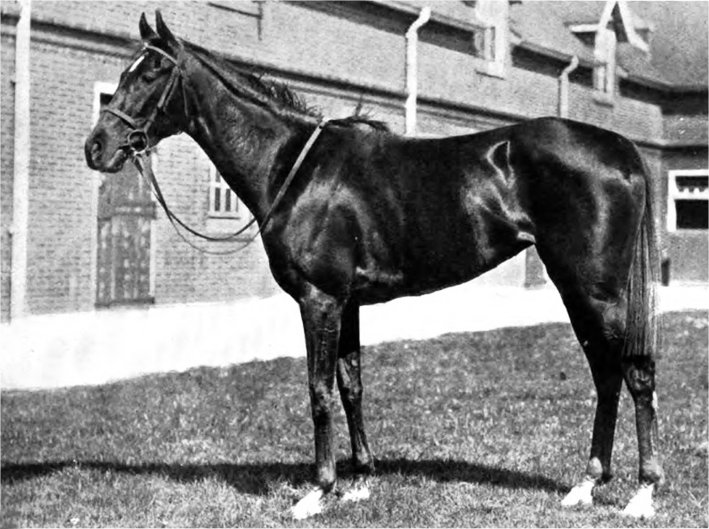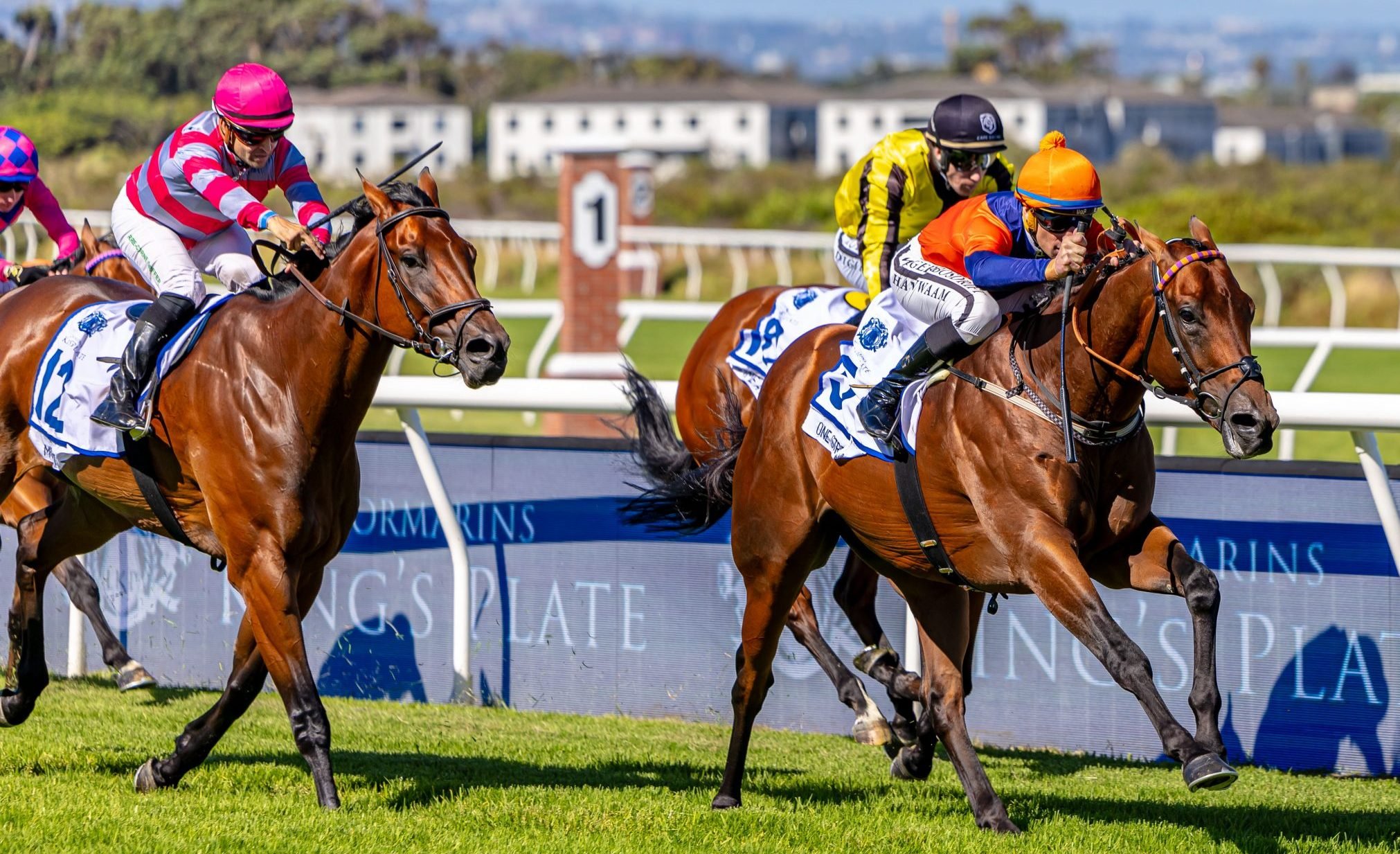The crack English sprint filly, Diadem was bred by Edgar Vincent, 1st Viscount D’Abernon, in 1914. By English and Irish Derby winner Orby, out of the distinguished racemare, Donnetta, the diminutive chestnut was described by her trainer, The Hon. George Lambton, (trainer to the great Lord Derby) as, “the sweetest and most gallant little mare that ever was seen on a racecourse.” Diadem has been commemorated with the Diadem Stakes at Ascot Racecourse, as well as South Africa’s prestigious sprint test.
2YO (1916)
Diadem first set foot on a race track as a juvenile in 1916. However, owing to the First World War, there was very little racing that year and few opportunities to expose the filly. According to Lambton’s account in ‘Men And Horses I Have Known’, she was late in shedding her winter coat and was a shy feeder, so the decision was taken not to debut her until the 5 furlong New Coventry Stakes on 22 June 1916. Despite not looking a picture in the parade ring, she came home the winner by two lengths in a 12 horse field and would close off her 2yo tally with four wins from five starts, and when finishing third by Dansellon in the Hopeful Stakes she was conceding him 9lb., as well has having been badly interfered with at the start.
3YO (1917)
Diadem made her 3yo debut in May 1917, winning the 1000 Guineas as the 6/4 favourite, despite not being at her best. After an uncharacteristic 12th place finish in the Derby on a holding course, Diadem started favourite for the 1917 Oaks over a mile and a half, despite her trainer’s misgivings. He wrote, “Personally, I did not like the idea at all, but as she never left an oat, and seemed quite contented she had to run. It never stopped raining that week, and by the Friday (Oaks Day) the course was a sea of mud, but, in spite of this, so well had she run in the Derby that she started a hot favourite. In the Dip, she and her old opponent, Sunny Jane, singled themselves out, but by this time all Diadem’s speed had gone, and nothing but her great heart enabled her to hang on. After a ding-dong struggle she was beaten half a length. I went home a miserable man, thinking to myself she would never get over these two races, and I am sure that not one filly in a million would ever have done so, but after a good rest she came out in the Autumn as good as ever.” Diadem would campaign three more times that season, winning both the Great Eastern Railway Handicap and the Kennett Plate and finishing 2nd by a neck in the Queensberry Handicap.
4YO (1918)
Lightly raced at 4, Diadem had four starts, kicking off with the 6 furlong Bretby Handicap at Newmarket in May, which she won by 1.5 lengths from Roscius. She then added the Salford Borough Handicap at Manchester three weeks later, winning by half a length, despite being assigned 10lb more than the rest of the field. In October she won the Snailwell Stakes over 5 furlongs at Newmarket, before finishing three and a half lengths third in the Champion Stakes over one and a quarter miles later that month. She was described that season as “one of the most brilliant sprinters seen in England for very many years.”
5YO (1919)
At five, Diadem was campaigned 10 times for 7 wins and a second place. She won the 7 furlong Rous Memorial Stakes at Royal Ascot on 19 June and was back the very next day to win the King’s Stand Stakes by two lengths over Best Born. She followed up with two more wins including a three length victory over Iron Hand in the July Cup at Newmarket, as well as the 5 furlong Molneux Plate at Liverpool by 1.5 lengths, to make it four in a row. At Goodwood she lined up in the King George Stakes, but was hampered at the start, putting paid to her chances and finishing 4th in a 4 horse field. However, she bounced right back, winning over 5 furlongs at the Curragh in August, followed by the Town Moore Handicap at Doncaster’s St Leger Meeting where Diadem defied top weight and a late challenge to win by a head from Quadrille. She won the Challenge Stakes in October and closed the term with a distant second in the 1m 1 furlong Cambridgeshire Stakes.
6yo (1920)
By 6, Diadem was being assigned welterweights, but undeterred, the gallant little filly still managed 12 starts for 7 wins, 4 seconds and a third. She won three times at Ascot, including the 1920 Rous Memorial in a walkover and All Aged Stakes on 17 June, followed by a second consecutive Kings Stand victory the following day. She won the Bottisham Plate at Newmarket three weeks later, followed by a second July Cup in a walkover on 1 July. She suffered narrow defeats in the Molneus Plate, the King George and the Peveri of the Peak Plate at the Derby summer meeting, before threading back to back victories in Newmarket’s Snailwell Stakes and the Thames Stakes at Kempton over 1 ½ miles. A second attempt at the Champion Stakes at Newmarket saw her finish a well beaten 7 lengths 3rd over the 1 ¼ mile trip.
7yo (1921)
Diadem had two final starts as a 7yo, finishing fourth in the 6 furlong Royal Stakes at Epsom (02/06) and then posted a second placed finish at Ascot in the 7 furlong Rous Memorial Stakes (16/06), to close her career with 24 wins and thirteen places from 39 starts.
Legacy
Diadem retired to stud, but sadly did not produce anything of consequence and died at the age of 17 in 1931.
The great sprint filly was honoured by Ascot Racecourse when they named a new sprint race in her honour in 1946, although Ascot’s Diadem Stakes is now known as the British Champions Sprint Stakes. She is still remembered every year at Kenilworth and 2019 will see the 60th renewal of one of South Africa’s greatest sprint races on Saturday, 23 February.









